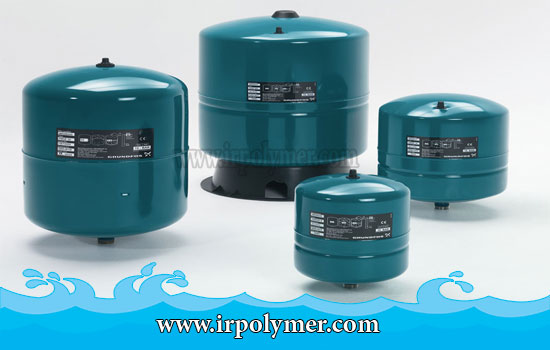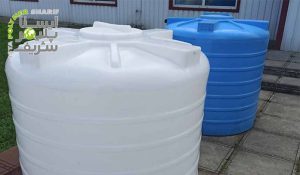When dealing with low water pressure in different floors of a building, the best solution is to install a water pump for the building. This system collects water in a pressure tank and uses the pump to push water into the piping network, thus resolving the issue of low pressure. A pressure pump tank is a tank that comes in volumes ranging from 2 to 500 liters and is made of either metal (steel) or fiberglass. After installation on or alongside the pump, it maintains water pressure regularly. These pressure tanks are installed with or on the pump to reach a specified volume of water before the pump turns on, thus assisting in maintaining high water pressure.
Advantages of Using a Pressure Pump Tank
- Helps save energy consumption.
- Reduces noise pollution caused by the pump’s operation.
- For domestic use, pressure tanks come in volumes of 10, 20, 30 liters, etc., and are suitable for homes with 3 to 4 floors with volumes of 50 to 60 liters.
- The pressure pump tank is designed so that the pump does not need to turn on and off with each faucet opening or closing, which reduces electricity consumption. However, this does not mean that the tank determines water pressure; the pump applies pressure to the water, while the tank prevents the pump motor from turning on and off frequently by storing water.
Types of Pressure Tanks
Pressure tanks are categorized based on how pressure is applied to them:
- Tanks that use a bladder to apply pressure.
- Tanks that use a diaphragm to apply pressure.
Bladder Tanks
A bladder inside the tank separates water from the compressed air. This bladder helps maintain water pressure. The air inside the tank, which may be nitrogen gas or air from the source, fills the space behind the bladder and exerts pressure on the water to push it through the pipes.
Diaphragm Tanks
These tanks have a rubber diaphragm that divides the tank into two sections: one for water and one for air. As water enters and exits the tank and with fluctuations in the air pressure inside, pressure is applied to the water. Diaphragm tanks generally perform better and have a longer lifespan compared to bladder tanks.
Price of a Pressure Pump Tank
The price of a pressure tank for a home water pump is typically determined by factors such as capacity, tank volume, brand, and the country of manufacture. It’s also important to note that these tanks require periodic maintenance (every 3 to 6 months). Another consideration is ensuring that the pump’s power matches the pressure tank you choose. Otherwise, the pump may face excessive stress, frequently turn on and off, and potentially damage the pressure tank, causing it to crack. If you’re looking to purchase various types of water tanks, contact the experts at ABtank using the numbers available on the website.






